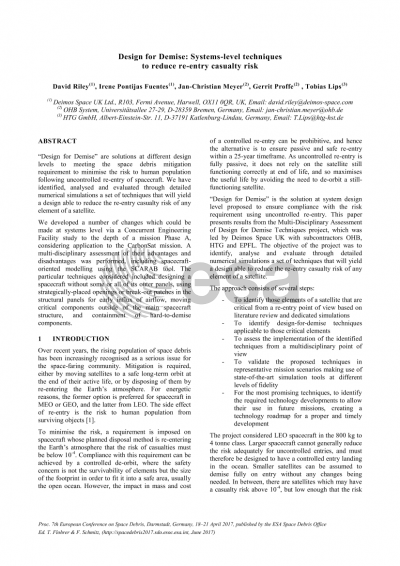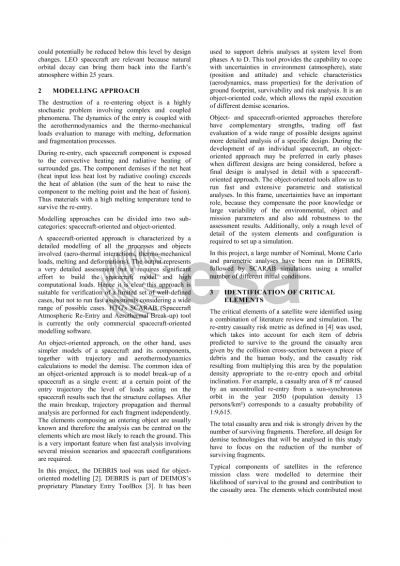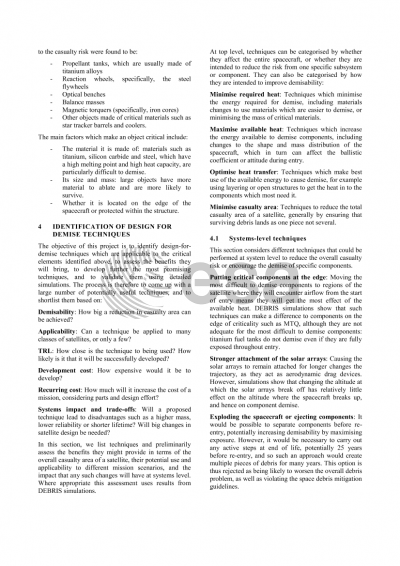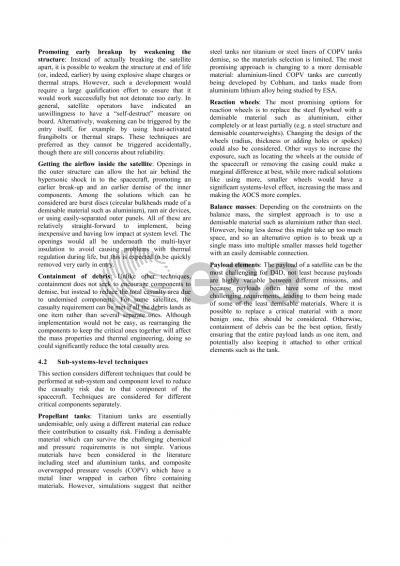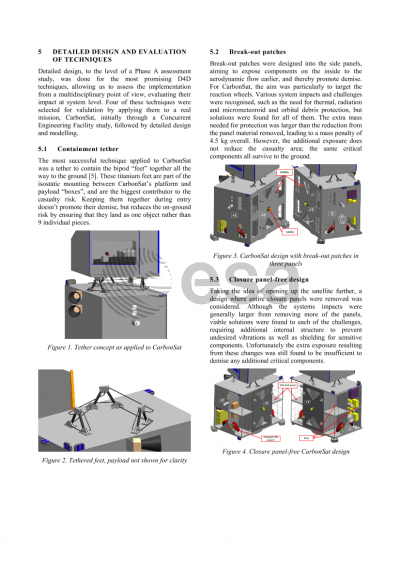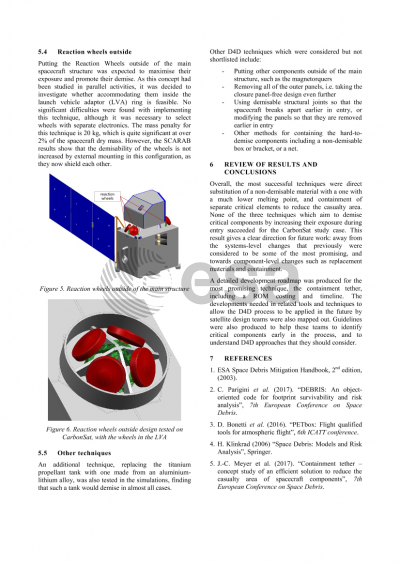Document details

Abstract
“Design for Demise” is a solution at system design level to meeting the space debris mitigation requirement to minimise the risk to human population following uncontrolled re-entry of spacecraft. Given the benefits in mass and cost of passive re-entry within the 25-year timeframe, a requirement is imposed on spacecraft that the risk of casualties must be below 0.0001.
We present a project run for ESA by Deimos Space, together with OHB System and HTG, to identify, analyse and evaluate through detailed numerical simulations a set of techniques that will yield a design able to reduce the re-entry casualty risk of any element of a satellite.
The approach taken consists of several steps:
• to identify those elements of a satellite that are critical from a re-entry point of view based on dedicated simulations
• to identify design-for-demise techniques applicable to those critical elements
• to validate the proposed techniques in representative mission scenarios making use of state-of-the-art simulation tools at different appropriate levels of fidelity
• to demonstrate the application of design-for-demise to CarbonSat, a proposed ESA Earth Observation mission, using a Concurrent Engineering Facility study to down-select the most promising set of design changes which could be considered, followed by detailed specification of the changes and modelling to assess the benefit obtained and ensure technical feasibility
• to identify a technology roadmap for proper and timely development of the techniques
We selected a number of changes which could be made at systems-level, and developed them via a Concurrent Engineering Facility study to the depth of a mission Phase B1. A multi-disciplinary assessment of their advantages and disadvantages was performed, including spacecraft-oriented modelling using the SCARAB tool. Aspects considered for each one include its success in reducing the risk to people on the ground, the impact that the technique would have at system level, how broadly applicable it is, and the costs associated with it, including one-off development efforts and recurring costs in using it. The particular techniques considered included:
• Designing a spacecraft without some or all of its outer panels
• Using strategically-placed openings or break-out patches in the structural panels for early influx of airflow
• Moving critical components such as the reaction wheels and magnetorquers outside of the main spacecraft structure
• Using demisable structural joints to encourage early break-up of the spacecraft
• Containment of hard-to-demise components, reducing the total casualty area by holding them together so that they land as a single object
By use of both object-oriented modelling using Deimos’ DEBRIS tool and detailed spacecraft-oriented modelling using HTG’s SCARAB tool, we are able to distinguish the techniques which would reduce the casualty area of CarbonSat from those that would lead to no improvements.
Preview
